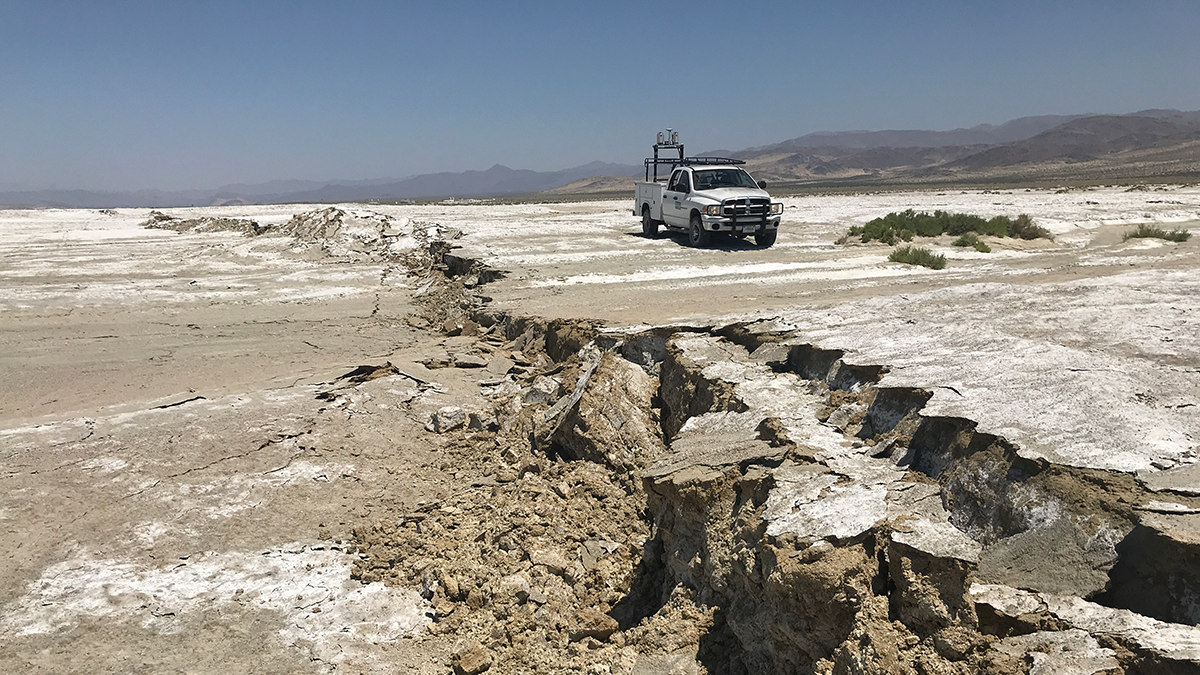Editors’ Highlights are summaries of recent papers by AGU’s journal editors.
Source: Journal of Geophysical Research: Solid Earth
Understanding how rocks break in the brittle upper crust is critical for predicting earthquakes, managing reservoirs, and modeling subsurface mechanics. In JGR: Solid Earth, two new studies by Jacob et al. [2025] and Hurley et al. [2025] use cutting-edge synchrotron-based X-ray diffraction techniques to reveal how stress evolves at the grain scale inside sandstone samples under load.
In both studies, researchers applied increasing axial compression to small cores of sandstone rocks, while scanning them with high-energy X-rays at a synchrotron radiation facility. Jacob et al. [2025] employed a technique called scanning three-dimensional X-ray diffraction to obtain high-resolution maps of intra-granular stress in the sandstone. By combining stress mapping with stepwise compression, the team observed increasing stress heterogeneity accompanied by dynamic reorientation of local stresses. High-stress clusters emerged and formed spatially persistent structures. These patterns were found to correlate with zones of higher grain rotation and strain, forming potential precursors to failure.
Hurley et al. [2025] combined X-ray tomography with three-dimensional X-ray diffraction and near-field high-energy diffraction microscopy to image stress and texture evolution in 3D. The researchers observed that larger grains showed more internal misorientation, possibly due to the presence of surface cements. By combining stress mapping with stepwise compression, the team showed that grain stresses demonstrated compressive stress alignment parallel to the loading direction and tensile stresses alignment orthogonal to the loading direction. This evolution was consistent with porosity evolution revealed by X-ray tomography, which showed pores closing parallel to the loading direction and opening normal to the loading direction.
Together, these studies reveal that rocks under stress behave more like collections of interacting grains than uniform solid blocks, showing similarities with inter-particle force transmission in granular materials. They also underscore the power of modern synchrotron tools in capturing these processes while performing rock deformation experiments, providing deeper insights into how brittle failure initiates in the Earth’s crust.
Citations:
Jacob, J.-B., Cordonnier, B., Zhu, W., Vishnu, A. R., Wright, J., & Renard, F. (2025). Tracking intragranular stress evolution in deforming sandstone using X-rays. Journal of Geophysical Research: Solid Earth, 130, e2025JB031614. https://doi.org/10.1029/2025JB031614
Hurley, R. C., Tian, Y., Thakur, M. M., Park, J.-S., Kenesei, P., Sharma, H., et al. (2025). Crystallographic texture, structure, and stress transmission in Nugget sandstone examined with X-ray tomography and diffraction microscopy. Journal of Geophysical Research: Solid Earth, 130, e2025JB031690. https://doi.org/10.1029/2025JB031690
—Yves Bernabé, Editor, JGR: Solid Earth

